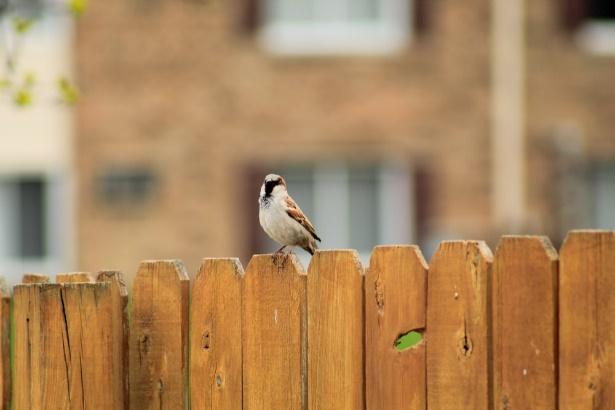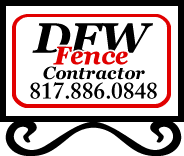
Wooden fences have been used for many decades and are still popular today, thanks to the attractiveness and natural aesthetics of wood. They’re an excellent method to ensure security and privacy, enhance the overall appeal of your property and even keep your pet safe. Another reason why wooden fences are so popular is because of the vast number of wood varieties available.
It is not easy to find the right wood for your fence. Therefore, we have created this guide to the various kinds of wood available and why you might choose one over the other for a wood fence in Texas.
The Best Types of Wood for a Fence in Texas
Here are some of the best types of wood you can use for wooden fences.
1. Pressure-Treated Wood
Pressure-treated wood has a natural yellow or mint-green hue with some knots that can differ based on species and grade of wood. There are also color-treated varieties that have been infused with a pigment to imitate the look of Cedar or Redwood. Pressure-treated wood accepts stain, sealer, and paint. Thus, you can customize it to achieve the look you desire. We strongly recommend using a semi-transparent stain for the best outcomes.
Pressure-treated wood is a durable and strong material. It is treated with a chemical to protect it against decay, termite attack, and rot. Fences made with pressure-treated wood are safe for you, your children, and even your pets. Pressure-treated wood can be slightly less stable than Redwood and Western Red Cedar and might shrink in size or move a little after it has been installed.
Last but not least, pressure-treated wood is the most budget-friendly choice for wood fencing that is resistant to rot and insects.
2. Western Red Cedar
Western Red Cedar has warm and reddish tones with well-spaced knots and a unique grain pattern. It weathers to a silver-gray patina over time. However, you can minimize this by applying sealer or stain regularly. It readily accepts a number of finishes. Thus, you can customize it to attain the look you want.
Western Red Cedar wood is durable and strong. It is quite stable and isn’t going to warp or shrink after installation. Western Red Cedar contains oils that make it naturally resistant to rot and insects for a long-lasting fence. It’s not advisable to bury the posts right into the ground without treating them with an appropriate wood preservative, as this will make the wood rot.
3. Oakwood
Oakwood is a kind of hardwood that is available in almost 600 species. Native to the northern hemisphere, oakwood is extremely durable and strong wood fence material.
It features a light color along with noticeable grain knots, making it look unique and distinctive. Fences made with oak are best defined by their wavy grains instead of their color. A neat finish gives the grain a beautiful highlight, enhancing the visual appeal of the fence.
Applying natural oil to the wood makes the material shine brightly and produce a lovely palette of colors. The beauty of the finished oak look is such that it’s lovely without any major style or embellishment. Depending on the kind of finishing, oak fences can be smooth and hard. Nevertheless, stains can darken the grain, resulting in a two-toned appearance. Thus, it’s best to let oakwood fences remain in their actual color.
4. Redwood
Redwood is undeniably the most commonly used wood for fences. Even though it is priced higher than other woods, the durability, aesthetic value, and quality of redwood make it one of the top choices for wood fences.
Redwood can resist rot and insects. However, it should still be treated with a stain, ideally a clear stain. This will preserve its natural look, prevent it from becoming grayish in color because of aging, and enhance its resistance to rot and insects.
To properly apply stain to redwood, allow it to weather for some time for the oils to dry out, or rough saw the wood to stain it immediately. Use a high-quality wood brightener and cleaner to prep the surface, and if required, sand the wood once it dries to remove any mill glaze that might prevent penetration of the stain. Applying a wood stain is recommended for redwood. A penetrating and transparent stain provides the best results; it improves the natural beauty and eliminates weathering.
5. Cypress
Apart from being resistant to rot, cypress contains cypertine – a natural chemical deterrent to insects. This extends its lifespan and makes cypress fences a great choice forncing. Cypress trees are native to the southern parts of the US, and the resulting transportation costs can make it a costly choice.
To properly apply wood stain on cypress, spread a drop cloth on a level surface in a well-ventilated area and then lay the block of cypress on the cloth. Now sand all the sides along the grain to prep the wood spores for the wood stain and apply the stain to a brush or cloth. Use mild pressure to apply the stain to the wood. You should start by working along the grain and then work against it to fill the pores from every angle.
Allow the stain to sit on the wood for some time as this deepens the color of the wood. Use a dry piece of cloth to rub the wood along the grain to get rid of any excess stain and prevent uneven drying of the stain. Gently sand the wood again and repeat the process for a second coat. This time you should apply less pressure and stain. Once it is dry, apply a sealant to increase the protective layer and allow for longevity.
Selecting the Best Wood for Fencing in Texas
The kind of wood you choose for your fence is a personal choice. Nevertheless, you should pay attention to your budget, requirements, fencing materials and the local climate conditions when choosing the best type of wood for fencing.
In mild climates with fairly small changes in temperature and little severe weather, durability is not much of a problem. In areas with considerable temperature changes, scorching summers, and freezing winters, durability is a much larger concern.
If you want to get a new fence and wish to learn more about your options, get in touch with DFW Fence Contractor for a consultation. We can help you narrow down your options and guide you to the best wood for your fence.
